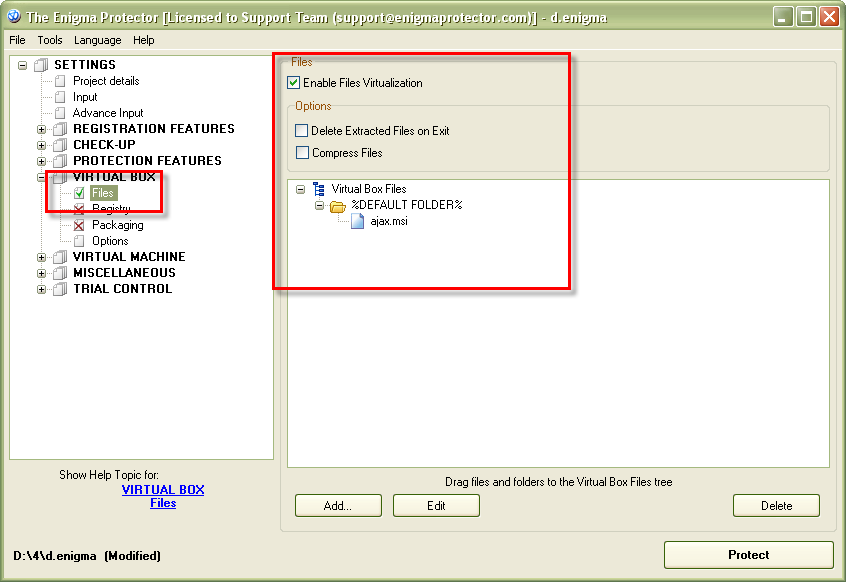
For example, molebox virtualization solution provides an option to hide files from directory listing which uses FindFirst API function. This option is particularly useful for extracting hidden files, which are not visible in the listing. This mode uses SHFILEOPERATION function to copy selected files/directories.Įxtract by name : Use this to extract files by specifying their path. You need to ensure that the output folder is outside the virtual file system or otherwise the files will be created within it (if the filesystem is writable of course).

Note that if the application does not virtualize child processes it will be run of outside the virtualization container.Įxtract : Use this to extract any files from the virtual file system.
ENIGMA PROTECTOR VIRTUAL BOX WRITE TO FILE WINDOWS
This feature has been modelled on the basis of Windows Run dialog, and will accept URLS, file paths etc. For example, this can be used to run regedit.exe to work with embedded registry keys. Run : Use this to run another application in the context of this process. In such cases you need to find the real VA of the hooked APIs and enter it in the options dialog. If the tests fail, it indicates that packer did not correctly hook the APIs. Program UsageĪccess Test : Use this to check if the selected file is readable by the virtual application. The latter is particularly recommended for ASLR aware systems. I recommend the one developed by Ralph Hare available at .uk or RemoteDLL available at SecurityXploded. Since DLL injection is a separate topic with it's own nuances, I have not provided a DLL injector in this package. The main tool is provided in the form of a DLL which needs to be injected into the process you want to extract files from. Virtual File System Editor is a tool to extract/modify embedded files from packed executables created by application virtualizers. This was originally released exclusively on the tuts4you forum. A tool to extract embedded files from application virtualizers.


 0 kommentar(er)
0 kommentar(er)
